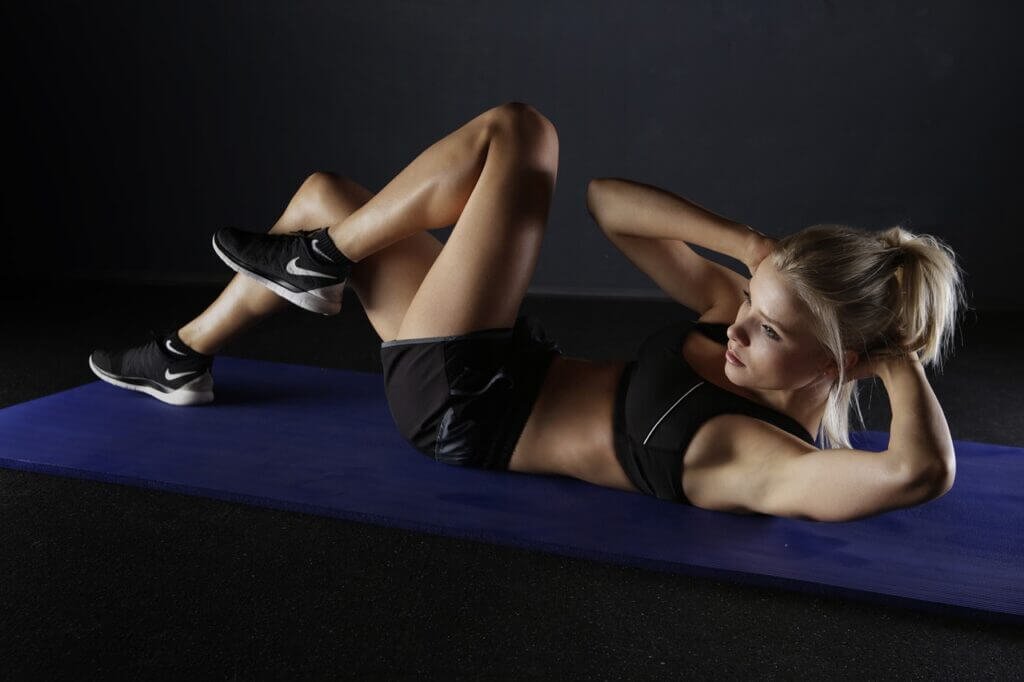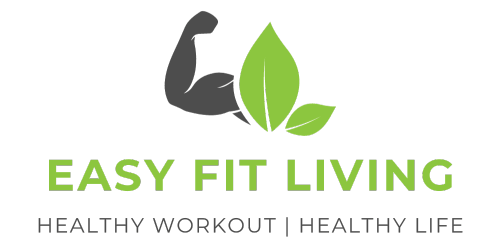As you age, it’s important to make adjustments to your workout routine to ensure that you are keeping your body healthy and strong. Whether you’re in your 40s, 50s, or beyond, your body undergoes changes that require modifications to your exercise plan. By being mindful of your changing needs and incorporating exercises that focus on flexibility, strength, and cardiovascular health, you can continue to enjoy the benefits of physical activity throughout your life. In this article, we will explore some key tips and strategies to help you adapt your workout routine as you age.

Assessing Your Needs and Goals
Determining your current fitness level
When it comes to adapting and customizing your workout routine as you age, the first step is to understand your current fitness level. Take time to assess your overall physical abilities, including strength, endurance, flexibility, and balance. This will help you determine the starting point for your exercise routine and identify areas that may require improvement.
Identifying your fitness goals
Next, it’s important to define your fitness goals. What do you hope to achieve through your exercise routine? Are you looking to improve your cardiovascular health, increase muscle strength, enhance flexibility, or simply maintain overall well-being? Clearly defining your goals will help you design an exercise plan that is specific to your needs and aspirations.
Considering any medical conditions or limitations
It’s crucial to take into account any medical conditions or physical limitations you may have when adapting your workout routine. Consult with your healthcare provider to understand any restrictions or precautions you should take. They can provide valuable insights on exercises that are safe and effective for your specific condition, ensuring your fitness journey is both beneficial and safe.
Importance of Warm-up and Cool-down
Benefits of warm-up exercises
Regardless of age, warming up before engaging in physical activity is essential. It helps prepare your body for exercise by increasing blood flow to your muscles, raising your body temperature, and gradually elevating your heart rate. Warm-up exercises also help loosen your joints and increase flexibility, reducing the risk of injury during your main workout.
Choosing appropriate warm-up exercises
As you age, it’s important to opt for warm-up exercises that are gentle and stress-free on your joints. Walking or light jogging, arm circles, knee lifts, and gentle stretching exercises are all great options. Be sure to spend at least 5-10 minutes on your warm-up before moving on to more intense exercises.
Cool-down exercises for aging bodies
Cooling down after a workout helps your body gradually return to its resting state and prevents the build-up of lactic acid, which can cause muscle soreness. Incorporate gentle stretches and slow-paced movements into your cool-down routine. This will help relax your muscles, promote flexibility, and aid in the recovery process, ultimately reducing post-workout stiffness and discomfort.

Choosing the Right Types of Exercise
Low-impact exercises
As you age, it’s important to prioritize exercises that are low-impact and gentle on your joints. Activities like walking, swimming, cycling, and water aerobics have minimal strain on your bones and joints while still providing numerous health benefits. These exercises help improve cardiovascular fitness, enhance endurance, and maintain overall well-being without placing excessive stress on your body.
Strength training
Including strength training exercises in your routine is crucial for preserving muscle mass and bone density as you age. Resistance exercises using dumbbells, resistance bands, or bodyweight exercises like squats, lunges, and push-ups can help build and maintain strength. It’s important to start with lighter weights and gradually increase resistance to avoid strain or injury.
Flexibility and balance exercises
Flexibility and balance exercises not only improve joint mobility but also reduce the risk of falls and injuries. Incorporate exercises such as yoga, tai chi, or Pilates into your routine to improve flexibility, stability, and body awareness. These activities can enhance posture, coordination, and overall physical well-being.
Adjusting Intensity and Duration
Listening to your body
As you age, listening to your body becomes even more important. Pay attention to any discomfort, pain, or unusual fatigue during and after exercise. Adjust the intensity or duration of your workouts accordingly to avoid overexertion or injury. Be mindful of any warning signs and consult with a healthcare professional if needed.
Regularly monitoring intensity levels
To effectively adapt your workout routine, it’s essential to monitor and adjust the intensity levels as necessary. This can be done by using a heart rate monitor, perceived exertion scale, or speaking with a certified personal trainer. Monitoring your intensity levels ensures that you are working within a safe and appropriate range for your age and fitness level.
Gradually increasing or decreasing workout duration
Adapting your workout routine means acknowledging that your body’s capabilities may change over time. Gradually increase or decrease the duration of your workouts to accommodate any changes in fitness level or physical abilities. This approach allows for a gradual progression and reduces the risk of overexertion or sudden changes that could strain your body.

Modifying Exercises for Safety and Comfort
Proper form and technique
Maintaining proper form and technique during exercises is crucial for preventing injuries as you age. Focus on maintaining a neutral spine, engaging core muscles, and using controlled movements. If you’re unsure about the correct form, consider working with a certified personal trainer who can provide guidance and ensure you’re performing exercises correctly.
Using modifications or alternatives
If you have certain physical limitations or conditions that affect your ability to perform certain exercises, there are often modifications or alternatives available. For example, if you have knee pain, you can replace high-impact activities like running with low-impact exercises such as swimming or cycling. Don’t be afraid to explore different options and find exercises that work best for your body.
Avoiding high-impact movements
As you age, it’s important to minimize or avoid high-impact movements that can strain your joints and increase the risk of injury. Jumping exercises, running on concrete surfaces, or repetitive high-impact movements can take a toll on your body. Opt for low-impact alternatives that provide the same benefits without the added stress on your joints.
Incorporating Rest and Recovery
Understanding the importance of rest days
Rest days play a vital role in any exercise routine, especially as you age. Giving your body time to recover and repair itself is crucial for preventing overuse injuries and maintaining overall health. Incorporate regular rest days into your schedule, allowing your muscles, joints, and body as a whole to recharge and rebuild.
Prioritizing sleep and recovery
Getting enough quality sleep is essential for overall well-being and exercise recovery. Aim for 7-9 hours of sleep per night to support optimal recovery and muscle repair. Additionally, consider incorporating relaxation techniques such as meditation or gentle stretching to promote relaxation and reduce stress levels, further aiding in workout recovery.
Including stretching and foam rolling
Daily stretching and foam rolling help improve flexibility, prevent muscle tightness, and alleviate post-workout soreness. After each workout, prioritize stretching exercises that target the major muscle groups. Foam rolling can also be beneficial for releasing tight knots and improving blood circulation. These practices contribute to healthier muscles and joints, enabling you to continue exercising comfortably and safely as you age.
Nutrition and Hydration for Aging Bodies
Eating a balanced diet
Proper nutrition is essential for supporting your fitness goals as you age. Aim to consume a balanced diet that includes a variety of fruits, vegetables, lean proteins, whole grains, and healthy fats. Adequate protein intake is especially important for maintaining muscle mass and aiding in muscle recovery. Consider consulting with a registered dietitian who can provide personalized recommendations tailored to your specific nutritional needs.
Hydrating properly
Staying hydrated is key for performance, energy levels, and overall well-being. As you age, it’s important to be mindful of your fluid intake, as the thirst sensation diminishes with age. Aim to drink at least 8 cups (64 ounces) of water per day, and increase your intake during exercise or in hot weather. Proper hydration supports joint health, digestion, and optimal body function.
Considering supplements or specialized diets
In some cases, supplements or specialized diets may be necessary to support your fitness goals and overall health. Consult with a healthcare professional or registered dietitian to determine if you have any nutrient deficiencies or require specific supplements based on your individual needs. They can guide you in making informed decisions about whether any additional nutritional support is necessary.
Staying Motivated and Consistent
Setting realistic goals
Setting realistic and achievable goals helps maintain motivation and consistency in your workout routine. Break down your goals into smaller, manageable milestones that can be easily tracked and celebrated. This incremental approach will keep you motivated, as you’ll see progress along the way, and prevent feelings of frustration or disappointment.
Finding enjoyable activities
Engaging in activities you genuinely enjoy is crucial for staying motivated as you age. Explore different types of exercises and physical activities to find what resonates with you. Whether it’s dancing, hiking, playing a sport, or attending group fitness classes, incorporating activities you find enjoyable into your routine ensures that you’ll look forward to exercising and be more likely to maintain consistency.
Tracking progress and celebrating milestones
Tracking your progress is an excellent way to stay motivated and monitor your fitness journey. Keep a workout journal, log your workouts digitally, or use a fitness app to record your achievements, exercise duration, and other relevant data. Celebrate milestones, no matter how small, to reward yourself and acknowledge your hard work and dedication.
Seeking Professional Guidance
Consulting with a doctor or physical therapist
When adapting your workout routine, it’s always wise to consult with a healthcare professional, especially if you have underlying health conditions or injuries. They can provide valuable advice and guidance based on your specific circumstances. A doctor or physical therapist can assess your fitness level, provide recommendations, and customize a workout plan that suits your needs and limitations.
Working with a certified personal trainer
Partnering with a certified personal trainer is an excellent way to ensure you’re exercising safely and efficiently as you age. They have the knowledge and expertise to design a personalized workout plan that aligns with your goals, abilities, and physical condition. A personal trainer can also guide you through proper form, technique, and adjustments to prevent injuries during your workout sessions.
Joining group exercise classes or fitness communities
Exercising with others who share similar goals and interests can be incredibly motivating and enjoyable. Consider joining group exercise classes or fitness communities that cater to individuals in your age range. Not only will you benefit from professional instruction, but you’ll also have the opportunity to socialize and make new friends, enhancing your overall exercise experience.
Adapting to Life Changes
Adjusting workouts during periods of illness or injury
Life changes such as illness or injury may require temporary adjustments to your workout routine. If you’re unwell or recovering from an injury, it’s crucial to listen to your body and give yourself the necessary time to heal. Consult your doctor or physical therapist for guidance on how to modify your exercises or alternate your routine to accommodate your condition.
Modifying routines for different stages of aging
As you progress through different stages of aging, your body’s needs and capabilities may change. It’s important to continually reassess and adapt your workout routine accordingly. This may involve modifying exercises, adjusting intensity levels, and focusing on different aspects of fitness. Remember to consult healthcare professionals or fitness experts to ensure you’re making the appropriate modifications.
Incorporating exercise into a busy schedule
Finding time for exercise can be challenging, especially when life gets busy. However, prioritizing regular physical activity is essential for maintaining overall health as you age. Schedule your workouts in advance, treat them as important appointments, and make them non-negotiable. Explore time-efficient exercise options like high-intensity interval training (HIIT) or short but intense workouts to make effective use of your limited time.
As you navigate the changes that come with aging, adapting your workout routine becomes essential for maintaining optimal health, fitness, and overall well-being. By carefully assessing your needs and goals, choosing the right types of exercise, adjusting intensity and duration, modifying exercises for safety and comfort, incorporating rest and recovery, focusing on nutrition and hydration, staying motivated and consistent, seeking professional guidance when needed, and adapting to life changes, you can create a workout routine that supports you through every stage of life. Remember, it’s never too late to prioritize your health and embrace the benefits of regular physical activity. You deserve to live a vibrant, active, and fulfilling life, and by adapting your exercise routine, you can continue to thrive as you age.


